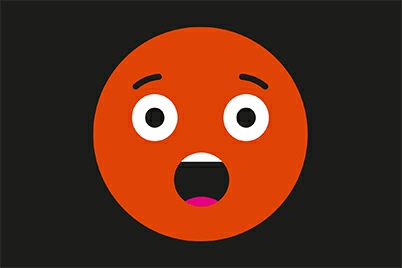

07584-


BRAND NEW
Branding -
If you’ve found yourself looking at your new or existing logo, wondering why something ‘just doesn’t seem right’ the chances are that your instinct is correct. Customers can be unpredictable, so if your logo is not eye catching or does not resonate with them immediately, they could easily move on to your competitors.
If you are unsatisfied with your current logo, take a good look at it and ask yourself the following questions. Does it represent all aspects of my business? Will it still look up to date in the next few years? Does it look professional? Will it look good both online and offline? Does it clearly demonstrate my company’s brand values?
If the answer is NO to any of these questions, maybe it is time to revisit your logo design. The following are ten tips to help improve a bad logo design.
1. Avoid Trends
A well-
2. Always Use Vector Images
A vector graphic is made up of mathematically precise points which means that the image will be sharp no matter what scale it is reproduced. Sometimes logos are created in bitmap format using software such as Photoshop. Bitmaps consist of pixels which do not scale when increased in size, so your logo could appear blurred making it unusable. If you have a vector logo, you can be confident that it will look just as good on a large advertising billboard as it does on your business card.
3. Avoid Clip Art or Stock Images
A logo should be unique and original. A logo should have meaning. It should have been developed from discussions between the designer and client to understand the business requirements and the objectives of what that logo should reach when out in the marketplace. Clip art or stock images do not achieve this and will look cheap by comparison to professionally designed logos.
4. Keep it Simple
One of the primary purposes of a logo is to communicate your brand. If it is not clear, how will it be able to communicate your businesses message to your customers? Logos need to be simple. They need to be memorable and by overcomplicating the design, your brand awareness will suffer. A complicated logo may look good on the side of a van, but when reduced in scale, the detail could merge together making your brand and message incomprehensible. Therefore, always keep it simple instead of complicating the design.
5. Great Colour Combinations
Colour can be very subjective, but it is important to choose a colour palette that is sympathetic to the brand. The colour should be appropriate for that business and should be limited to a few simple colour combinations so as not to overcomplicate the design. If you were an organic food retailer, what would be a more appropriate colour – red or green? Another consideration is how will it look in black & white. Some applications of logos, such as in a newsletters, may require it to be in black only. It is always worthwhile having a monotone version of your branding produced should there ever be a requirement for this.
6. Appropriate Typography
Typography is one of the most important aspects in logo design and choosing the correct typeface is a vital part of that process. Try to avoid default fonts such as Times New Roman or Arial. Don’t use unprofessional fonts such as Comic Sans or Old English. Also don’t include too many fonts in the design Any more than two typefaces will overcomplicate the logo. Choose a balanced and legible typeface that can be read at the smallest and largest of scales and is also appropriate to convey your brand message.
7. Make it Suitable for all Mediums
When a logo is being designed always be aware that it may be required for multiple uses, not solely to appear on a business card. It may be embroidered onto workwear, it could be incorporated into large format signage or it may appear on company name badges. Therefore, the logo should be adaptable, not only in scale, but also in weight without losing any of its clarity.
8. Avoid Unnecessary Inclusions
Sometimes it is not necessary to include abbreviations such as ‘Co.’ and “Ltd.’ Although, Trademark ™, Registration ® and Copyright © can be included as required, inclusion of additional superfluous elements can have an affect on the overall simplicity of the design. If it is not needed, don’t include it.
9. Be Aware of Hierarchy
Logos will always have a hierarchy. The icon may be the primary element followed by the company name. It could be the company name as the primary element followed by a secondary phrase such as location or type of business. Whatever the requirements, care should be taken to make sure that the most important element stands out from the rest of the logo to help convey an appropriate brand message.
10. Always Do Your Research
Finally, always do your research. This is the most important part of logo design. Understand your business, who your target customer is, what are your brand values and what message are you trying to portray to your target markets. Also, check to see what your competitor’s logos look like. You would not want any unfortunate similarities between your new logo and theirs. Before any design work commences, a good understanding of these factors will all help contribute to a great logo which will help promote your business for years to come.
Please note that the views, thoughts, and opinions expressed in this article belong solely to the author, and not necessarily to any other group or individual. To ensure you are fully compliant with all current legislation, please take legal/professional advice and do not rely solely on the information provided in these articles.

Copyright © 2018-
Terms of Use | Privacy Policy, GDPR & Cookie Policy | Trading Terms





